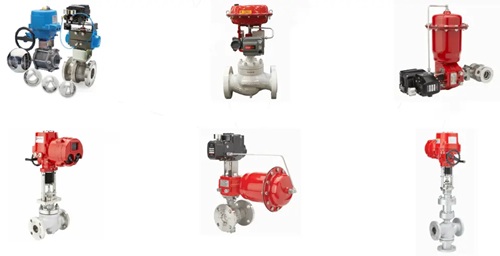


Essential Precautions and Preventive Maintenance for Control Valves
China Control valves are vital for regulating flow, pressure, and temperature in industrial fluid systems. Proper installation, handling, and maintenance are key to ensuring their reliability, preventing failures, and maximizing operational efficiency. This guide highlights important precautions during valve installation and essential preventive maintenance steps to extend valve life and reduce downtime.
Pre-Installation Cleaning
Thoroughly clean pipelines to remove dirt, rust, and debris before installing control valves. Residual particles can damage valve seats and spools, causing leaks or malfunction. After installation, flush the system with the valve fully open and verify sealing integrity to prevent leaks.
Accessibility and Placement
Install valves near the ground or floor to allow easy access for inspection and repair. For valves with positioners or handwheels, ensure clear visibility and access for manual adjustments or emergency operation.
Correct Flow Alignment
Confirm that the valve is installed according to the flow direction arrow on the body. Incorrect installation can lead to internal damage and operational failures.
Minimize External Stress
Prevent flange deformation or valve damage by using support frames, avoiding angled installations especially for large valves, and isolating vibrations from nearby heavy machinery.
Bypass Pipelines
For critical systems, install a bypass around the valve to allow continuous operation during maintenance or in case of valve failure, minimizing costly downtime.
Handwheel Operation
Ensure handwheel mechanisms are disengaged during automatic control to avoid interference, but available for manual override when needed.
Special Care for High-Temperature Valves
Grease valve packing every three months to prevent hardening and maintain sealing effectiveness in high-temperature conditions.
Closure/Leakage Test
Regularly close the valve fully under flow and inspect for leakage. Detecting leaks early helps avoid damage and costly repairs.
Stroke Test
Operate the valve through its full stroke to confirm smooth movement and accurate response to control signals, especially important in harsh or dynamic environments.
Auxiliary Piping Inspection
Check piping connected to valves for corrosion, deformation, leaks, and structural integrity to prevent secondary failures affecting valve performance.
Valve Sticking: Caused by debris or lack of lubrication; resolved by cleaning and proper lubrication.
Excessive Vibration: Due to high flow rates or poor support; mitigated by adding supports and vibration isolation.
Packing Leakage: Results from worn packing; fixed by replacement and routine greasing.
Inaccurate Positioning: Linked to faulty positioners; addressed by recalibration or repair.
Enhanced Safety: Reduces leak risks and operational hazards.
Cost Savings: Avoids expensive emergency repairs and production losses.
Improved Efficiency: Maintains accurate flow control and system performance.
Extended Valve Life: Limits wear and prolongs functional lifespan.
Regulatory Compliance: Meets industry safety and environmental standards.
Control valves are critical to industrial process control, and their effectiveness depends on proper installation and consistent maintenance. Adhering to installation precautions and conducting scheduled preventive maintenance will significantly boost valve reliability, reduce downtime, and optimize system performance. A proactive maintenance program is essential for safe, efficient, and long-lasting valve operation in any demanding industrial environment.Learn more about Google SEO.
